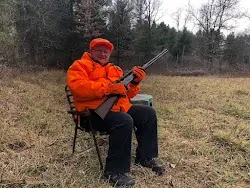Winter at the Farm. Photo by Steve Apps.
As 2021 limps its way into history, I look forward to opening the door to 2022. With COVID continuing to menace almost everyone in one way or another, it’s difficult to look forward to another year without wondering “what next?” Another version of the virus yet not seen? More cancelled events? Is there any hope?
I remember the late 1940s and early 1950s, when Polio was rampant across the country. Wisconsin was especially hit hard. Thousands of young people suffered from the disease, many of them with paralyzed limbs, some of them confined to iron lungs that helped them breathe. A close neighbor boy died. I was one of them with Polio a paralyzed right leg, which prevented me from walking. Which kept me home from school for several months.
For me, a 12-year old at the time, it was a time of little hope. A time of “why me?” I will never forget my father’s words at the time, “Next year will be a better year.” He said that to me often, as he helped me learn to walk once more. At the time, not only could I not walk, but I felt worthless. After several weeks of his therapy—mostly driving the tractor where I had to use my paralyzed leg to drive it—I could walk but with a limp.
It’s easy to feel hopeless today, as hospitals fill with COVID patients, and every newscast begins with dreaded stories about the virus swirling through our communities. My father’s words were words of hope, “Next Year will be a better year.” One way to avoid the feeling of hopelessness is to think about the good things in life. A beautiful winter day is one of good things.
THE OLD TIMER SAYS: Hope is powerful, never, ever leave it behind.
WHERE TO BUY MY BOOKS:
If you want to learn more about my Polio experience, see my book, Limping Through Life. You can buy my books at your local bookstore, order online from bookshop.org, or purchase from the Friends of the Patterson Memorial Library in Wild Rose—a fundraiser for them. Phone: 920-622-3835 for prices and ordering, or contact the librarian: barnard@wildroselibrary.
Patterson Memorial Library
500 Division Street
Wild Rose, WI 54984.
www.wildroselibrary.org
If you live in the western part of the state, stop at Ruth’s home town, Westby, visit Dregne’s. and look at their great selection of my books. Order a book from them by calling 1-877-634-4414. They will be happy to help you.

















